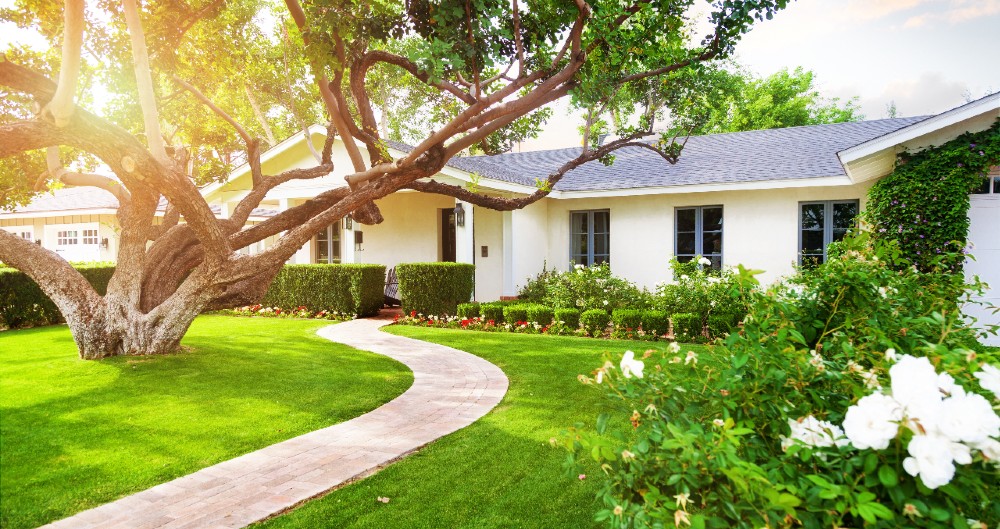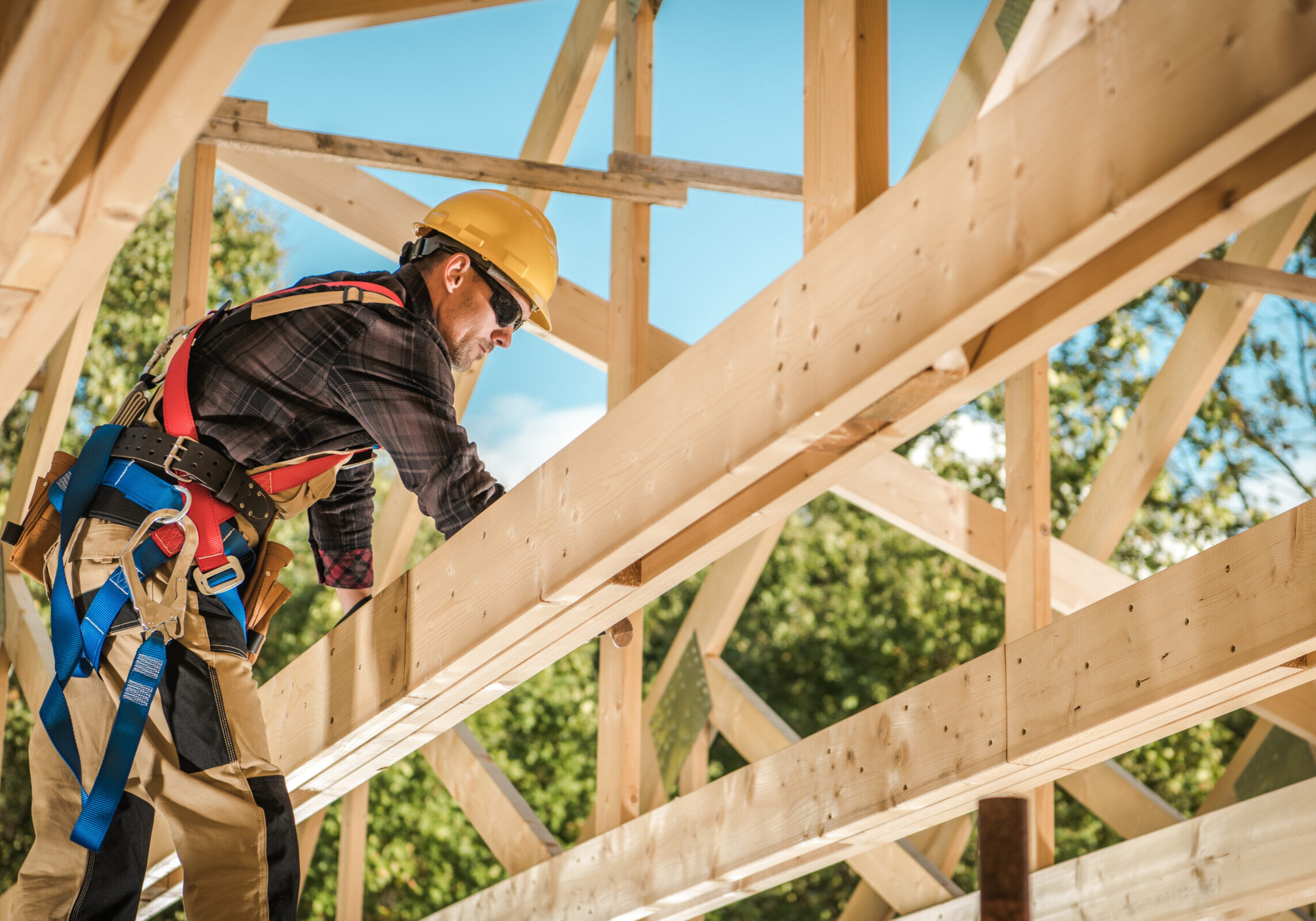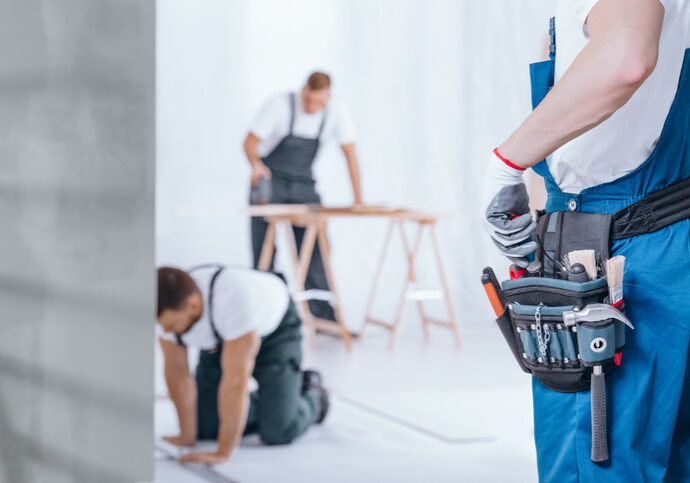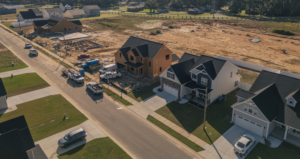Housing Figures: Share of Single-Story Homes Rise and Prices Hit Another Record
June 29, 2021

Housing Figures is our monthly round-up of the top news stories related to residential new construction spending and the latest market numbers.
Home prices hit another record last month as builders report that they’re starting to see buyer pushback on pricing. Meanwhile, the latest Survey of Construction, released by the Census Bureau, included some interesting tidbits on construction trends — namely, single-story homes are rising in market share and home construction timing accelerated in 2020.
Home prices hit records (and price out buyers)
New home prices are squeezing out buyers on the low end. Data from the Census Bureau, Department of Housing and Urban Development and the National Association of Home Builders shows that home buyers who represent the bottom fourth of the market have been priced out of new construction. According to NAHB, these buyers are looking exclusively at the existing home market, where there is historically low supply. [NAHB Now]
Home prices hit another record in May. Home prices rose at the fastest pace on record last month with the median existing home price reaching $350,300 according to the National Association of Realtors. That number is up 24% from May 2020 when the median sales price was $283,500. Meanwhile, existing home sales decreased for the fourth straight month, dropping 0.9% from April. Sales were up significantly year-over-year when compared to May 2020 when shutdowns were in full swing. [CNN]
New home sales decrease from April, but show year-over-year gains
Sales of newly built homes decreased in May. New home sales decreased 5.9% in May from April but were up 9.2% from May 2020. That represents a seasonally adjusted annual rate of 769,000 units. The decline was primarily due to a 14.5% decrease in the South as the Northeast experienced a 33% increase in new home sales and the West saw a 4.8% increase. The Midwest saw flat sales. However, decreasing lumber prices could provide builders with some breathing room. [Realtor.com]
Zonda’s index saw a year-over-year spike in May. Zonda’s New Home Pending Sales Index was up by 32.6% year-over-year in May, though it decreased 3.6% month-over-month. On a year-over-year basis, sales rose in 23 out of the 25 top markets, with San Francisco reporting the strongest sales growth, followed by Los Angeles and New York. These figures differ from the Census Bureau because the New Home PSI is based on new home orders and the average sales rate per community. [Builder]
Report solidifies importance of home construction
New report highlights importance of home construction. A new report by NAR says a once-in-a-generation response will be needed to address housing supply. NAR emphasizes the “underbuilding gap” in new housing units and recommends that lawmakers make housing construction an “integral part of a national infrastructure strategy.” [Builder and Developer]
Alternatives to wood? Some builders show interest
Builders eye alternatives to wood to combat high lumber prices. Some builders are looking into alternatives to wood according to NAHB to find solutions for elevated lumber prices. Some potentials include structural insulated panels, prefabricated concrete walls and precision-cut lumber alternatives. A recent Time magazine article even pondered why homes are still being built with wood despite wildfires getting worse. [NAHB Now/Time]
Not yet a HomeSphere partner?
HomeSphere connects residential construction builders with building product manufacturers to facilitate long-lasting relationships through our award-winning software platforms, My HomeSphere® and HomeSphere-IQ®.
Shorter construction times in 2020, and lots of reno work
Construction times accelerated for home building last year. The 2020 Survey of Construction, released by the Census Bureau, found that the average construction time for building a new home went down by about 10 days in 2020. Last year’s decline disrupted an upward trend that started in 2014, but supply issues this year resulting in slowed building times could reignite that trend. The average construction time, including a month from authorization to start, was about 7.8 months in 2020. [Builder and Developer]
Half of single-family homes started in 2020 were single-story. NAHB also used the Census Bureau's Survey of Construction to determine that the share of single-story homes in 2020 was equal to the share of two or more stories homes. Overall, the share of new homes with two or more stories decreased from 52% in 2019 to 50% in 2020. The only region to see a decrease in the share of single-story homes was New England. [Eye on Housing]
Homeowners spent more on remodeling than ever over the past year. A new report by Houzz found that home improvement budgets ballooned by 15% in 2020, up to a median of $15,000 per household. What’s more, the renovation work wasn’t entirely put on credit — the percentage of homeowners who paid for reno work with their credit cards decreased from 37% in 2019 to 29% in 2020. So, what did people spend their cash on? Garden and deck improvements, smart gadget upgrades and closet makeovers. [Realtor.com]
Housing starts increase as building permits decrease
Housing starts increased slightly in May, while permits eased. Housing starts rose by 3.6% in May, representing a seasonally adjusted annual rate of 1.57 million units. Meanwhile, building permits decreased by 3% to an annualized rate of 1.68 million units. Home builders continued to face challenges related to supply issues and high lumber and materials prices. While single-family starts were up 4.2%, multifamily starts were up 2.4%. The Midwest saw a 29.9% increase in starts. [Bloomberg]
Builder business intentionally slowed, sales remain favorable
Builders intentionally slowed business in May. Home builders reported that they’ve intentionally started to slow business in HomeSphere and BTIG’s latest State of the Industry Report. Builders also reported that they are starting to see a pushback from buyers on pricing, even as sales remain favorable. Still, a survey record high of all respondents reported raising some, most or all base prices in May. The increase is partly to cover widespread materials, labor and land costs. [HomeSphere]






